Perception Vs. Reality: Eight Things Brands Get Wrong About AM/FM Radio
Click here to view a 15-minute video of the key findings.
Click here to download a PDF of the full deck.
Ad community perceptions of media audiences are often completely opposite reality. Duncan Stewart, Director of Research, Technology, Media & Telecommunications at Deloitte, puts it best: “Why do people think that nobody listens to radio anymore? Because there is a narrative that new media kills old media, so nobody bothers to look at evidence that doesn’t fit the narrative.”
Let’s challenge the narrative and look at some evidence. We’ve collected frequently heard media agency and marketer myths along with studies from Advertiser Perceptions, the gold standard of advertiser/agency sentiment.
Using data from research leaders Nielsen, Maru, and Edison Research, we disprove eight of the biggest misperceptions brands hold about AM/FM radio.
Misperception #1: “No one listens to AM/FM radio.”
In August 2024, Advertiser Perceptions asked 303 media agencies and advertisers, “What percentage of Americans are reached by AM/FM radio in a typical week?” The response – 46%. The Nielsen reality of 82% is nearly double the perception.
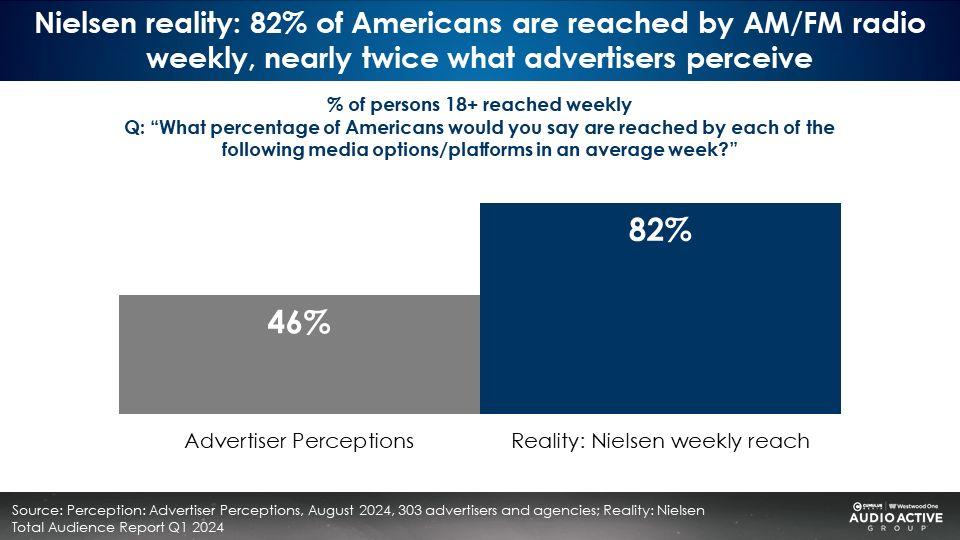
Misperception #2: “Most are still working at home and commuting is still way off, impacting AM/FM radio listening.”
Nielsen and Maru reveal 85% of pre-COVID commuters are now working outside of the home.
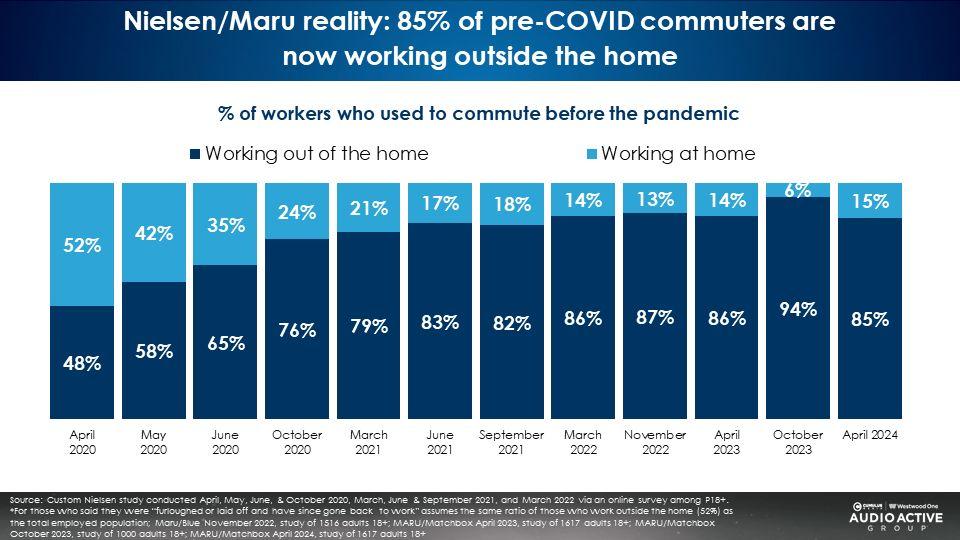
Edison Research’s just released Q2 2024 “Share of Ear” study reveals AM/FM radio’s share of time spent in the car has recovered to pre-pandemic norms.
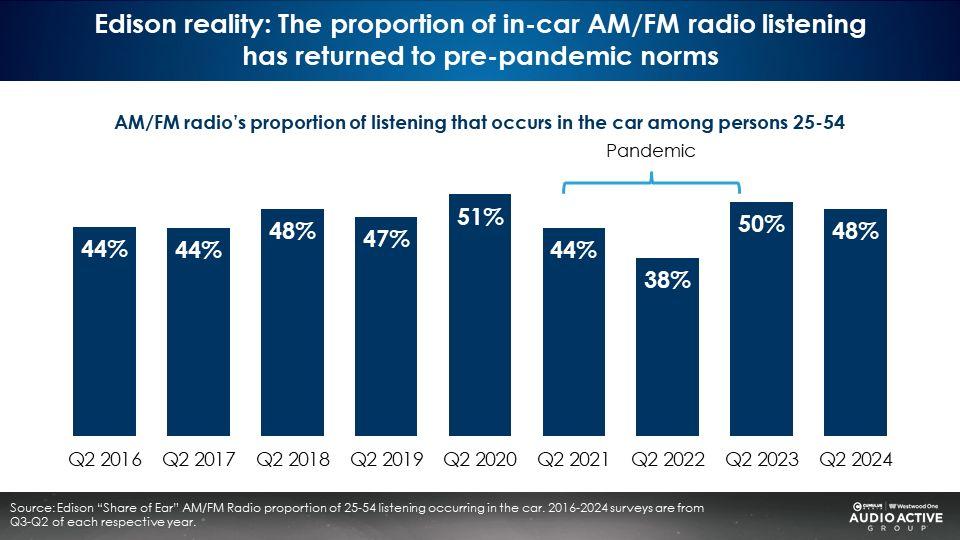
Misperception #3: “Audience shares to Pandora/Spotify are larger than AM/FM radio.”
In an August 2024 study of media agencies and marketers, Advertiser Perceptions asked for the perceived audience shares of Spotify, Pandora, and AM/FM radio. The perceived audience shares of Pandora/Spotify (43%) are much greater than AM/FM radio (27%).
The reality? Edison’s “Share of Ear” reveals the audience share of AM/FM radio is 17X larger than ad-supported Spotify and 14X larger than ad-supported Pandora.
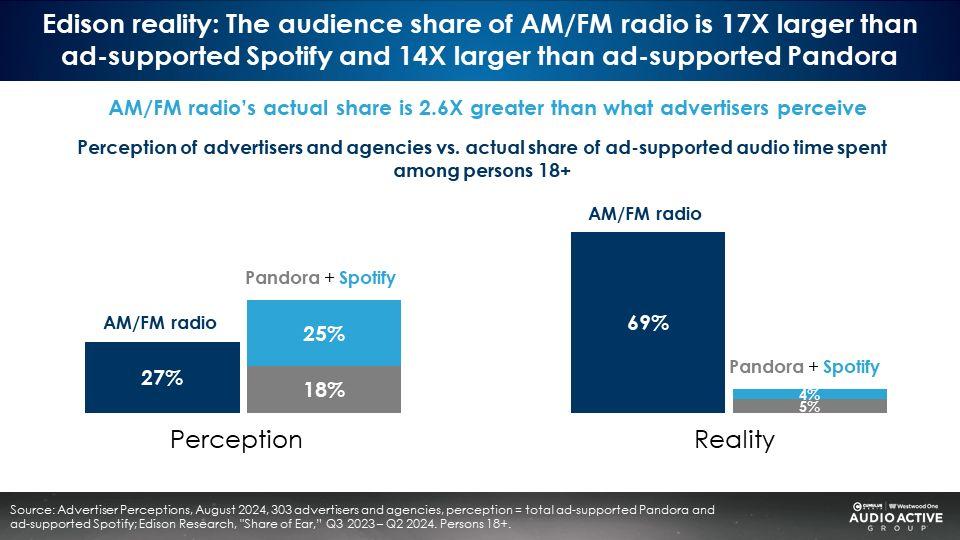
Here is the ranker of U.S. ad-supported audio shares from the just released Q2 2024 Edison “Share of Ear”:
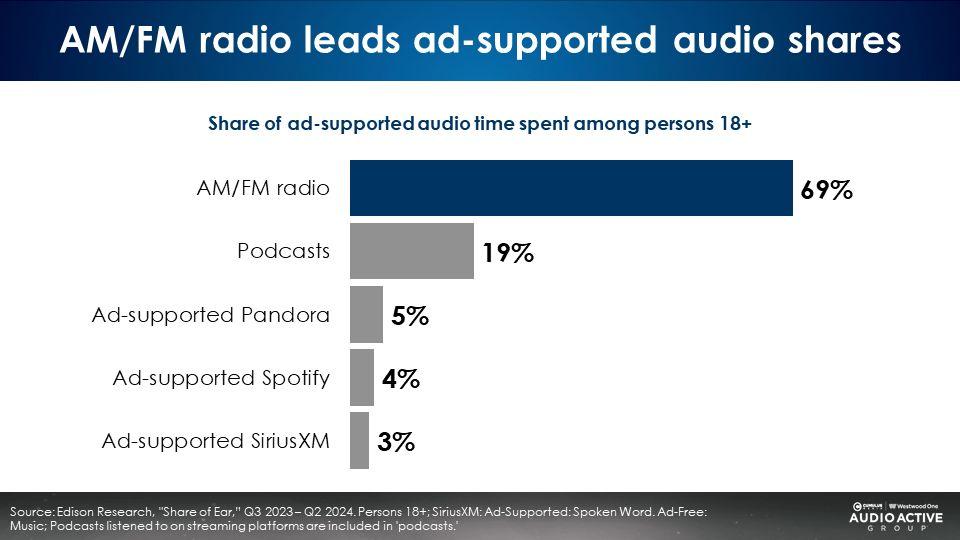
Misperception #4: “In the world of the connected car, the number one thing people do in their car is stream online radio on their smartphones.”
The reality? In the car, AM/FM radio is the “queen of the road” with a stunning 86% share of ad-supported audio, according to Edison’s “Share of Ear.”
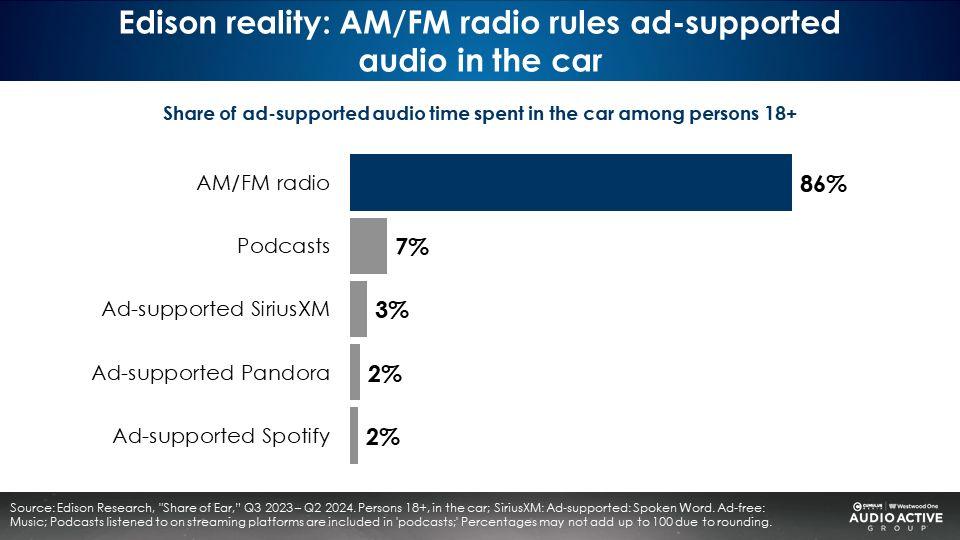
Misperception #5: “Today’s optimal media plan: Put all of your money into connected TV, TV, and digital.”
An aggressive media plan with connected TV, digital, and TV generates a respectable monthly reach of 64%. A media plan is not complete without AM/FM radio. AM/FM radio always elevates the media plan.
According to Nielsen Media Impact, the media planning and optimization platform, shifting just 10% of the connected TV, digital, and linear TV media plan to AM/FM radio generates an impressive 20% increase in reach for the same investment.
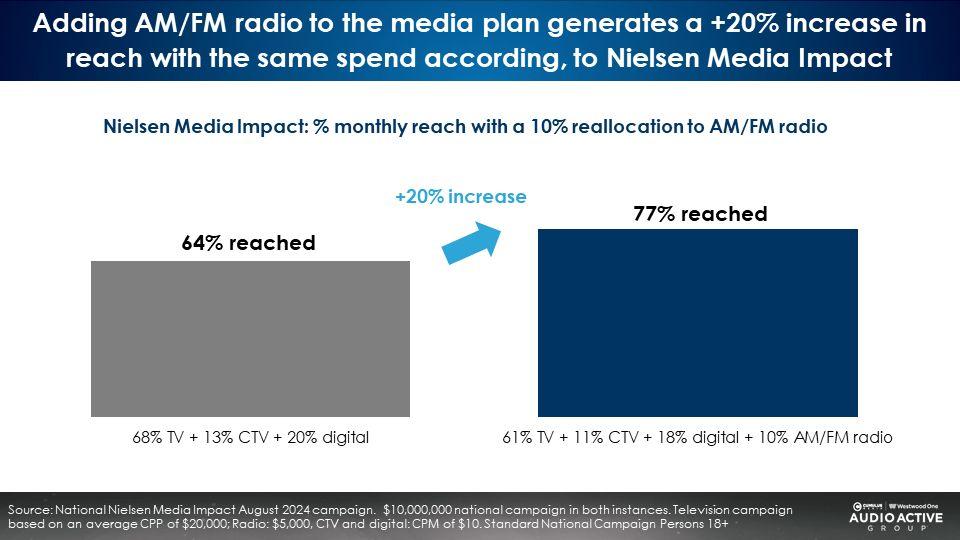
As America’s number one mass reach media, adding AM/FM radio to the media plan always generates large growth in incremental reach. The analysis below reveals a TV base buy and the incremental reach generated with connected TV (a tiny +2%), digital (+6%), and AM/FM radio (a significant +14% lift).
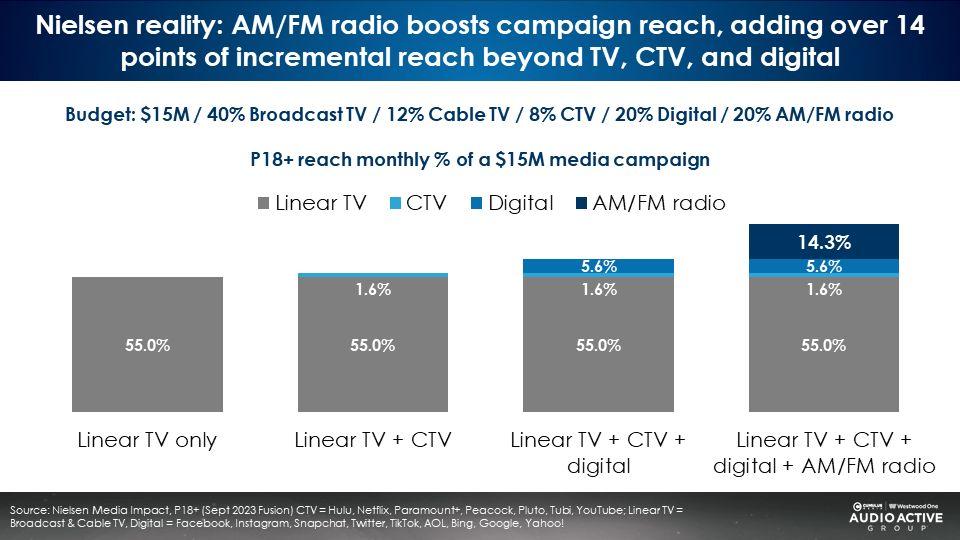
Misperception #6: “The optimal audio buy is Spotify, Pandora, and podcasts.”
Here’s why you cannot check the box of an audio media plan that only contains digital audio. According to Edison’s “Share of Ear,” the combined ad-supported daily reach of Spotify, podcasts, and Pandora is only 31%. AM/FM radio, in contrast, has a daily reach of 63%.
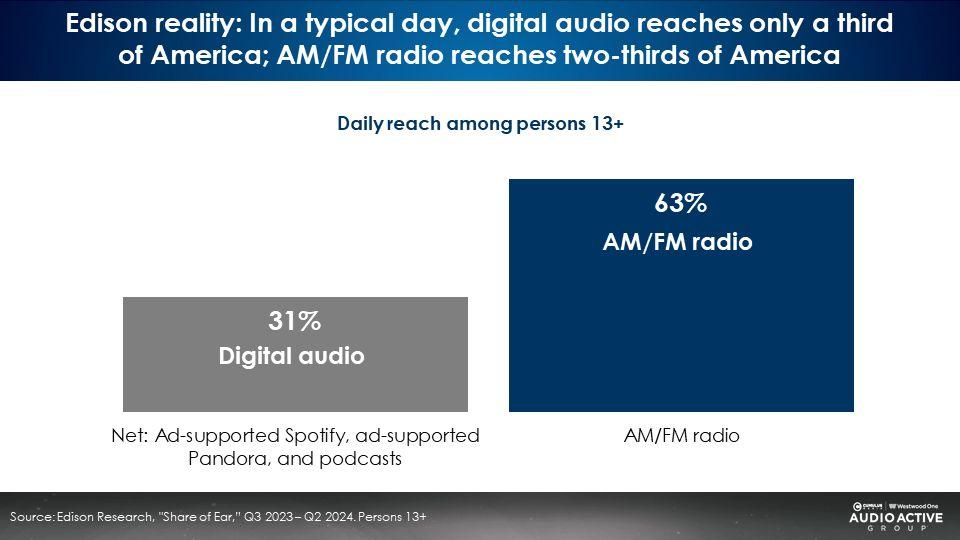
The reality is when you put AM/FM radio into a digital audio plan, reach soars. As the “Share of Ear” reach accumulation reveals below, the addition of AM/FM radio causes a massive lift in daily reach.
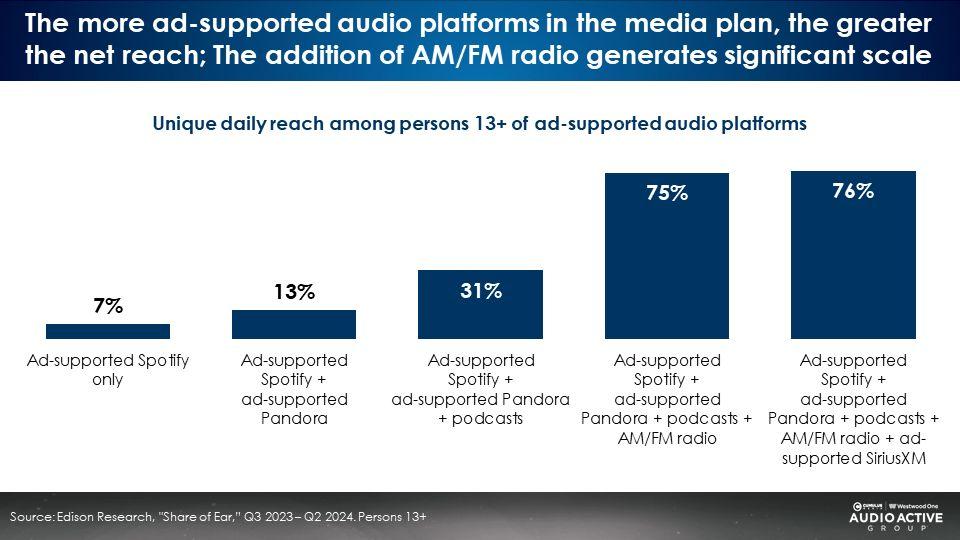
Misperception #7: “I would love to consider audio. However, there’s a total lack of ROI and sales lift and outcomes evidence for AM/FM radio.”
Profit Ability 2: The New Business Case for Advertising is a significant new study on marketing effectiveness from measurement firms Gain Theory and Ebiquity, along with media agencies EssenceMediacom, Mindshare, and Wavemaker UK.
This study was a massive undertaking that involved:
- $2.2 billion in media spend analyzed (2021-2023)
- 142 brands
- 14 sectors
- 10 media channels
- 53 brands matched pre- and post-COVID
The results? Audio is number two in short-term return on investment and number three in long-term ROI.
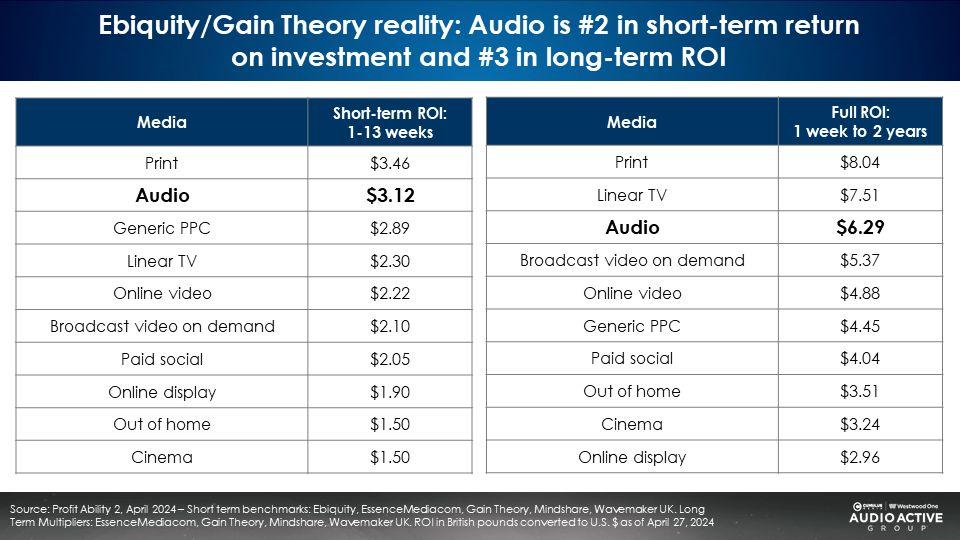
Can AM/FM radio ads drive search and site traffic? Over the course of five years (from 2019-2023), the Cumulus Media | Westwood One Audio Active Group® has commissioned LeadsRx, a leader in measuring the impact of advertising on site traffic, to conduct 17 attribution studies for brands spanning a variety of categories.
The key takeaway? On average, AM/FM radio generates an impressive 14% lift in site traffic across the 17 campaigns.
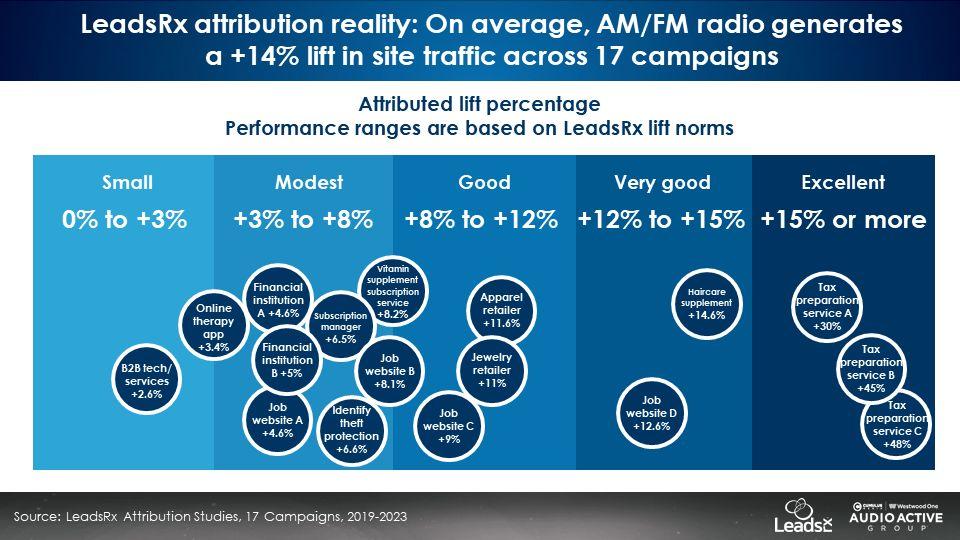
Misperception #8: “AM/FM radio cannot be measured.”
Anything that can measured in TV and digital can be measured in audio! Via this link, see all measurement solutions available to quantify audio impact: “Yes, your audio campaign can be measured!”
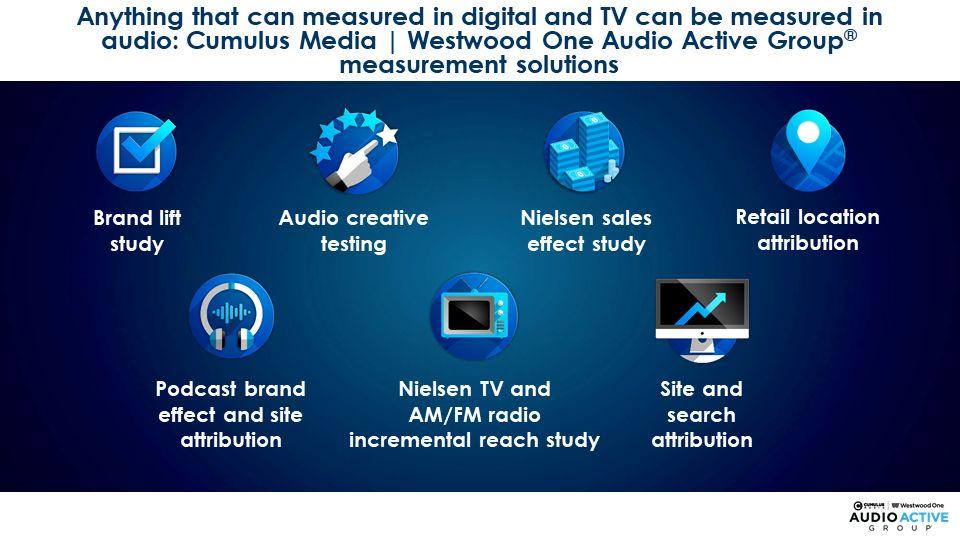
Bonus misperception: “No one under 35 listens to AM/FM radio anymore.”
The reality? Nielsen reveals 18-34 is one of AM/FM radio’s largest listening demographics.
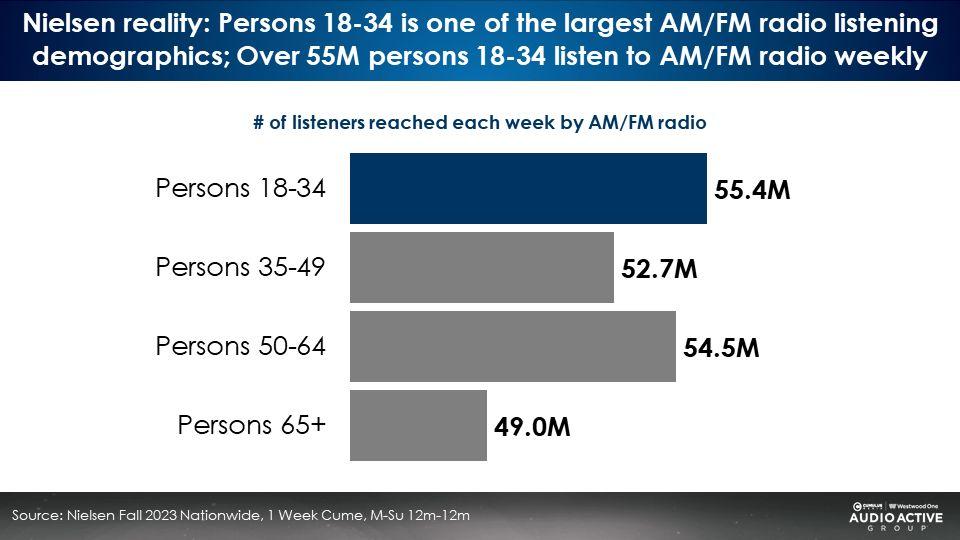
The prevailing narratives are wrong. Know the realities:
- 82% of Americans are reached by AM/FM radio weekly, nearly twice what advertisers perceive.
- 85% of pre-COVID commuters are now working outside the home. The proportion of in-car AM/FM radio listening has returned to pre-pandemic norms.
- The audience share of AM/FM radio is 17X larger than ad-supported Spotify and 14X larger than ad-supported Pandora.
- AM/FM radio rules ad-supported audio in the car.
- AM/FM radio boosts campaign reach, adding over 14 points of incremental reach beyond TV, CTV, and digital.
- In a typical day, digital audio reaches only a third of America. AM/FM radio reaches two-thirds of America.
- Audio is #2 in short-term return on investment and #3 in long-term ROI. On average, AM/FM radio generates a +14% lift in site traffic across 17 campaigns.
- Anything that can measured in digital and TV can be measured in audio with Cumulus Media | Westwood One Audio Active Group® measurement solutions.
- Persons 18-34 is one of the largest AM/FM radio listening demographics. Over 55M persons 18-34 listen to AM/FM radio weekly.
Click here to view a 15-minute video of the key findings.
Pierre Bouvard is Chief Insights Officer of the Cumulus Media | Westwood One Audio Active Group®.
Contact the Insights team at CorpMarketing@westwoodone.com.